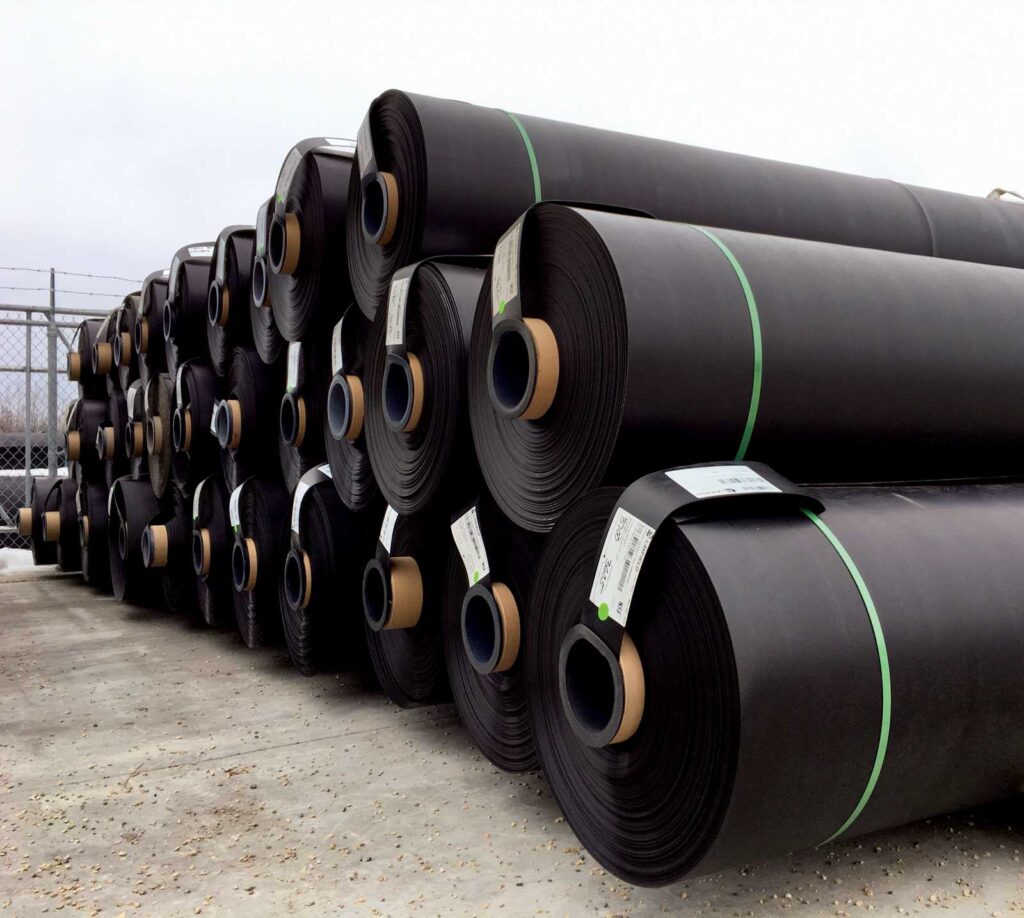What is geomembrane used for?
Geomembranes are synthetic membranes used in various applications to provide a barrier to fluids or gases. Here are some common uses:
- Landfill Liners and Covers: To prevent contaminants from leaching into the ground and to contain landfill gases.
- Water Reservoirs and Ponds: To retain water and prevent seepage.
- Mining: To contain and manage mine tailings and process solutions.
- Wastewater Treatment: To line ponds and lagoons, preventing leakage.
- Agriculture: To line irrigation canals, ponds, and silage covers.
- Environmental Protection: To contain hazardous materials and prevent contamination of soil and groundwater.
- Construction: To provide waterproofing for foundations, tunnels, and other structures.
- Aquaculture: To create secure, leak-proof environments for raising fish and other aquatic organisms.
Geomembranes are chosen for their durability, resistance to chemicals and UV light, and their ability to form a reliable barrier.

What is lldpe geomembrane?
LLDPE (Linear Low-Density Polyethylene) geomembrane is a type of geomembrane made from linear low-density polyethylene. It is known for its flexibility, strength, and chemical resistance. Here are some key features and uses of LLDPE geomembrane:
Key Features
- Flexibility: LLDPE geomembranes are more flexible than HDPE (High-Density Polyethylene) geomembranes, making them easier to install and adapt to irregular surfaces.
- Strength: Despite its flexibility, LLDPE has high tensile strength and puncture resistance.
- Chemical Resistance: Resistant to a wide range of chemicals, making it suitable for various industrial applications.
- UV Resistance: Can be formulated to resist UV degradation, which is essential for outdoor applications.
- Seam Strength: Excellent seam strength when welded, ensuring a reliable barrier.
Common Uses
- Landfills: Used as liners and covers to prevent leachate migration and gas escape.
- Water Containment: Ideal for lining reservoirs, ponds, and canals.
- Mining: Used in heap leach pads, tailings dams, and process ponds.
- Agriculture: For lining irrigation ponds, canals, and containment of agricultural waste.
- Wastewater Treatment: Lining for lagoons and treatment ponds to prevent leakage.
- Environmental Protection: Containment of hazardous materials to prevent soil and groundwater contamination.
- Aquaculture: Used in fish and shrimp farming ponds to maintain water quality and prevent seepage.
LLDPE geomembranes offer a balance between flexibility and strength, making them suitable for a wide range of containment and lining applications.

What is epdm geomembrane?
EPDM (Ethylene Propylene Diene Monomer) geomembrane is a type of synthetic rubber membrane used for various waterproofing and containment applications. It is known for its durability, flexibility, and resistance to a wide range of environmental conditions. Here are some key features and common uses of EPDM geomembrane:
Key Features
- Flexibility: EPDM remains flexible even at low temperatures, making it suitable for use in diverse climatic conditions.
- Durability: It has a long service life due to its excellent resistance to UV radiation, ozone, and weathering.
- Elasticity: EPDM can elongate and conform to irregular surfaces, providing a secure fit.
- Chemical Resistance: Resistant to a variety of chemicals, including acids and alkalis.
- Ease of Installation: Can be installed in large sheets with fewer seams, reducing potential leak points.
Common Uses
- Water Reservoirs and Ponds: Used for lining ponds, lakes, and reservoirs to prevent seepage.
- Landfill Liners and Covers: Provides a barrier to prevent leachate contamination and gas escape.
- Roofing: Widely used in roofing applications due to its durability and weather resistance.
- Aquaculture: Used in fish and shrimp farming ponds to maintain water quality and prevent leakage.
- Irrigation Canals: Lining for canals to prevent water loss through seepage.
- Wastewater Treatment: Lining for lagoons and treatment ponds to contain and manage wastewater.
- Environmental Protection: Used to contain hazardous materials and prevent soil and groundwater contamination.
EPDM geomembranes are valued for their long-term performance and adaptability to a wide range of environmental conditions. Their resilience and versatility make them a popular choice for various containment and waterproofing applications.

